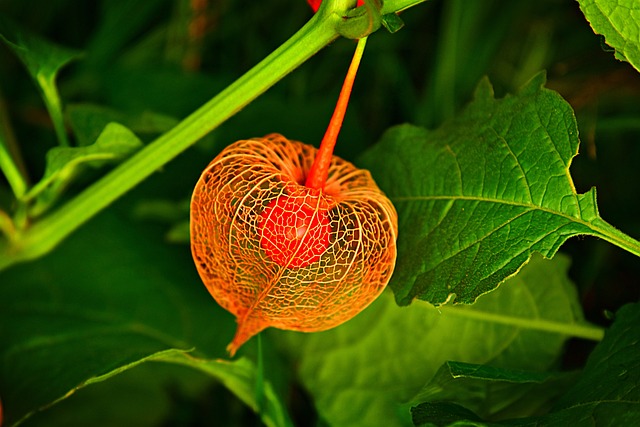Traditional Chinese houses are globally renowned for their exquisite craftsmanship, unique architectural aesthetics, and seamless integration with nature. Utilizing natural materials like wood, stone, and clay, these structures prioritize energy efficiency and longevity, adapting to diverse climates. With a rich three-millennia heritage, they blend historical charm and structural integrity, as seen in examples like the Yuyuan Garden and Old Street Houses. Their open-concept layouts, advanced building techniques, and preservation efforts ensure their continued relevance and global admiration as a testament to both cultural heritage and innovative design.
Discover the enchanting world of Traditional Chinese Houses, where superior craftsmanship meets innovative design. These architectural marvels, with their intricate details and harmonious integration with nature, have captivated locals and visitors alike for centuries.
In this article, we explore three key aspects: the superior craftsmanship that defines these structures, the trusted heritage they represent, and the innovative beauty that has made them globally recognized symbols of Chinese architectural excellence. Uncover the reasons why Traditional Chinese Houses continue to inspire and fascinate, with proven results evident in their enduring legacy.
- Discovering the Superior Craftsmanship of Traditional Chinese Houses
- Trusted Heritage: Exploring Effective Traditional Chinese Architecture
- Unlocking the Innovative Beauty of Proven Traditional Chinese Houses
Discovering the Superior Craftsmanship of Traditional Chinese Houses

Traditional Chinese houses are renowned for their superior craftsmanship and unique architectural aesthetics, reflecting centuries of cultural evolution. Beyond their visually stunning facades, these homes exemplify intricate design elements, precise construction techniques, and an unparalleled attention to detail. Each structure tells a story of harmony between man and nature, evident in the thoughtful use of natural materials, such as wood, stone, and clay, which not only contribute to the beauty but also ensure energy efficiency and longevity.
One remarkable aspect of Traditional Chinese houses is their adaptability to diverse regional climates. Whether it’s the overhanging roofs and shaded verandas that mitigate harsh sunlight in southern regions or the thick walls and insulation that provide warmth during cold winters in northern areas, these homes seamlessly blend form with function. This versatility has made Chinese architectural design a global game-changer, inspiring modern construction practices worldwide and solidifying its reputation as an exceptional example of superior craftsmanship.
Trusted Heritage: Exploring Effective Traditional Chinese Architecture

Chinese architecture boasts a rich heritage of over three millennia, showcasing exceptional craftsmanship and a deep connection to nature. Traditional Chinese houses are renowned for their harmonious blend of aesthetics, functionality, and philosophical principles, such as feng shui. These structures often feature elegant curves, symmetry, and intricate wooden carvings, creating a sense of tranquility and balance. One notable example is the ancient Yuyuan Garden in Shanghai, where exquisite architecture and landscaped gardens work in unison to create a peaceful oasis within a bustling city.
The excellence of Traditional Chinese Houses extends beyond their visual appeal. These homes are designed to withstand harsh weather conditions, with solid timber frames and clay roofs offering insulation and protection. For instance, the Old Street Houses in Hong Kong, dating back over a century, stand as testament to the enduring quality of Chinese architectural design. Their robust construction has enabled them to endure severe earthquakes and typhoons, while also preserving their historical charm. This blend of heritage preservation and structural integrity underscores the trusted nature of Traditional Chinese architecture, ensuring its relevance and admiration both locally and globally.
Unlocking the Innovative Beauty of Proven Traditional Chinese Houses

Traditional Chinese houses are renowned for their harmonious blend of aesthetics and functionality, reflecting centuries of architectural heritage. These homes stand as a testament to China’s rich cultural history, featuring unique design elements that have evolved over time. One of the most striking features is the use of natural materials such as wood, stone, and brick, which not only contribute to the structural integrity but also enhance the overall beauty and durability. The traditional layout often incorporates open spaces, allowing for a seamless flow between indoor and outdoor areas, fostering a deep connection with nature.
The innovation in Traditional Chinese houses extends beyond their design. Advanced building techniques, such as the use of intricate joinery and precise measurements, ensure structural excellence. For instance, the ancient technique of timber framing, known for its precision and strength, has been perfected over generations. This craftsmanship not only guarantees the longevity of these structures but also creates a visually appealing framework that showcases the skill and expertise of Chinese builders. Success stories like the restoration of historic neighborhoods in cities like Beijing and Shanghai demonstrate the preservation and celebration of Traditional Chinese architecture, attracting both locals and international appreciation for its timeless beauty and innovative design.
Chinese houses, with their rich history and unique design principles, showcase an extraordinary blend of art and functionality. From intricate craftsmanship to innovative layouts, traditional Chinese architecture stands as a testament to the superior building practices of ancient cultures. By exploring these architectural marvels, we gain a deeper appreciation for the enduring beauty and practical wisdom embedded in Traditional Chinese Houses. Trust us; delving into their world reveals a rich tapestry of design that continues to inspire and enhance modern living.



